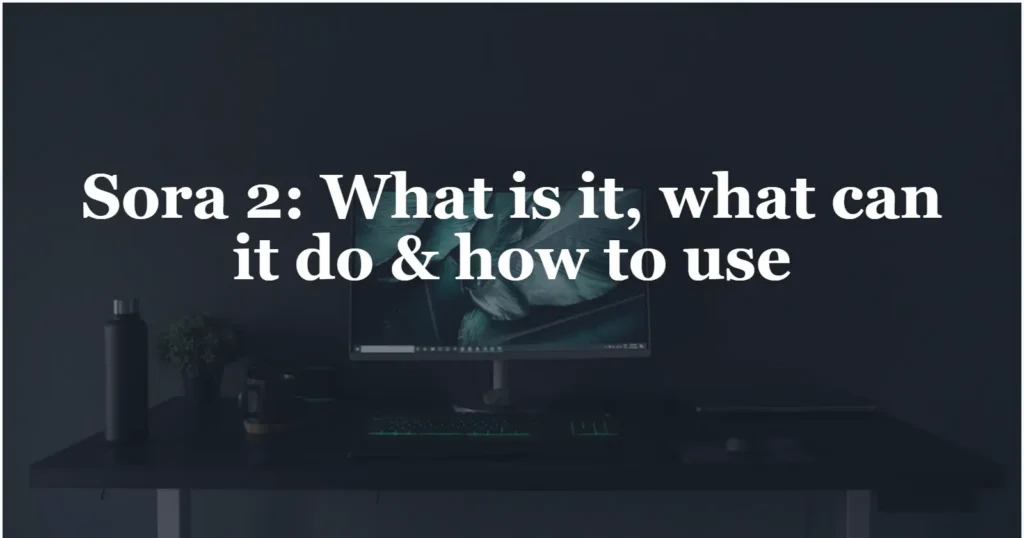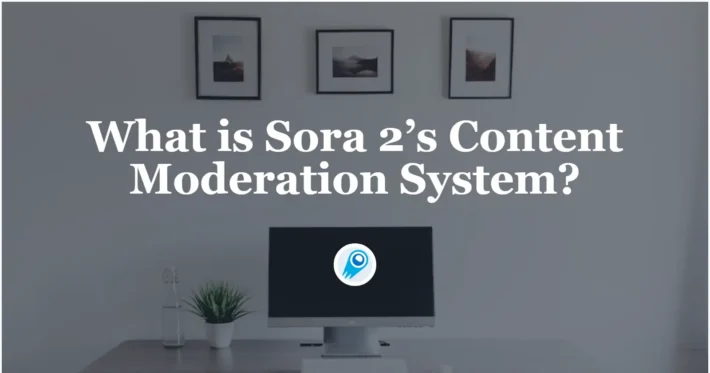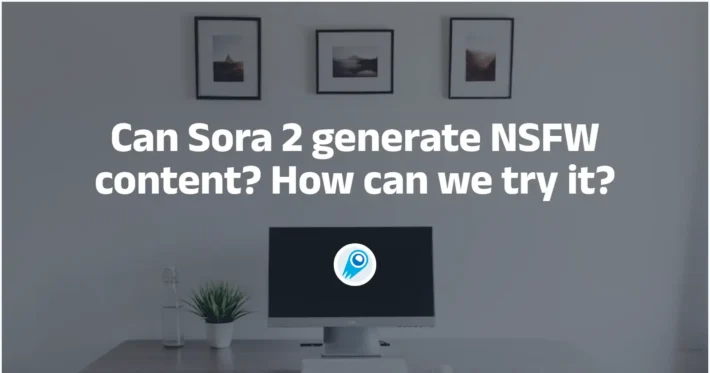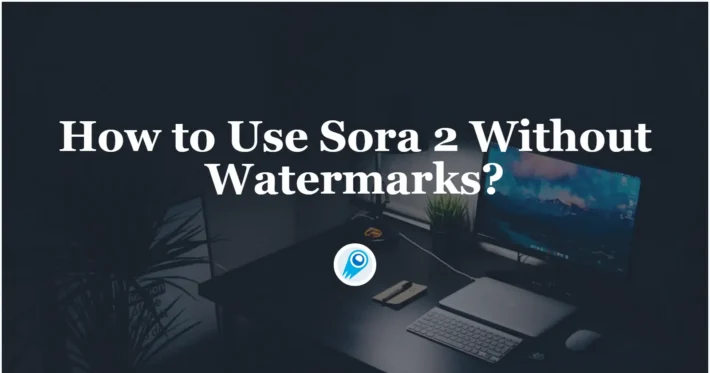Sora 2: What is it, what can it do & how to use

On September 30, 2025, OpenAI unveiled Sora 2, the next-generation text-to-video and audio model and a companion social application called Sora. The release represents OpenAI’s most visible push yet into generative video: an attempt to bring the kind of rapid, creative iteration that ChatGPT brought to text into short-form video, while packaging the capability inside an app that resembles the swipeable, feed-driven experiences of TikTok and Reels. The model expands on the original Sora (first introduced in early 2024) by adding synchronized audio, tighter physical simulation, multi-shot consistency, and features that let users insert verified likenesses of themselves into generated scenes.
Below I break down what Sora 2 is, what it can (and cannot) do today, how OpenAI is packaging it commercially and in product, how it performs relative to existing tools, and what creators and studios should expect next.
What exactly is Sora 2, and how does it differ from the original Sora?
Sora 2 as a model and a product
Sora 2 is both a machine-learning model and a product ecosystem. The ML model is trained to convert text prompts (and optionally images) into short videos that include synchronized sound — speech, Foley-style sound effects, and ambient audio — while preserving object permanence, plausible physics, and scene continuity across multiple camera shots. The product layer includes a new invite-only iOS app called Sora (initial rollout in the U.S. and Canada), a web experience on sora.com, and a planned API for developers.
What changed vs. Sora 1
OpenAI positions Sora 2 as a significant architectural and training advance over the first Sora: earlier models could produce compelling frames but often struggled with motion realism, consistent object relationships across shots, and audio synchronization. Sora 2 emphasizes improved world simulation — better adherence to real-world physics and coherent multi-shot storylines — and native audio generation so the video and sound are produced together rather than stitched in post. This is the headline technical difference OpenAI highlights.
Creative improvements:
- Improved physics & world simulation: Sora 2 better respects momentum, collisions, buoyancy, and other physical properties in scenes, so actions like jumps, throws, or water interactions look believable.
- Greater steerability and stylistic range: creators can more reliably request camera moves, shot types, or art styles and expect the model to comply. OpenAI positions Sora 2 as offering more direct control over composition and timing.
- Higher realism and frame consistency: Sora 2 reduces flicker and synthesis artifacts across frames, producing smoother motion and object permanence across short clips.
What kinds of outputs can Sora 2 produce?
- Text-to-video clips: short, high-fidelity sequences that demonstrate improved frame coherence and realistic object motion.
- Synchronized audio: Sora 2 generates speech, ambient sound, and sound effects that match visuals and timing. This is a critical advance versus many previous video models which lacked coherent audio.
- Self-insertion / remixing: via the Sora app, consenting users can provide short video samples that others can reuse to generate AI cameos — with controls allowing subjects to revoke or limit use.
What are Sora 2’s headline features?
Native audio and synchronized sound
A core advancement is synchronized audio. Sora 2 can generate dialogue (speech with timing that matches visible lip movements), ambient soundscapes, and sound effects aligned to on-screen events. Producing credible audiovisual output from a single generative pass simplifies workflows for creators who previously needed separate audio generators or manual sound design.
Physical realism and multi-shot consistency
Sora 2 ships with a cameo workflow: users can record brief in-app video and voice checks that allow the model to insert a verified likeness and voice into generated scenes. OpenAI has built consent controls, liveness checks, and metadata/watermarking to limit misuse. One of the headline features of the Sora app built around Sora 2 is the ability for users to include people (including themselves and invited friends) in generated clips via a “Cameo” or consented-use flow. OpenAI has built authentication and consent controls into the feature: contributors can be co-owners of generated works and can revoke or restrict the use of their likeness. Public figures’ likeness is restricted and explicit content is blocked.
Controllability and Style range
Sora 2 supports stronger steerability: creators can request particular camera types, cinematic styles, animation approaches (e.g., anime versus photoreal), and can iterate on scenes with remixing features. The system is advertised as capable of generating cinematic, animated, photorealistic, or surreal outputs while following user direction with high fidelity. The Sora app adds social and remix mechanics so creators can build on each other’s work (with controls for consent—see safety section).
How is Sora 2 priced and how can users access it?
Sora 2 Pro and integration with ChatGPT Pro
OpenAI is offering a Sora 2 Pro — a higher-quality variant that, at least at launch, is available as an experimental option to ChatGPT Pro subscribers via sora.com and will be integrated into the Sora app soon. ChatGPT Pro is a paid tier (announced previously by OpenAI) that bundles priority compute access, and Sora 2 Pro is positioned as an advanced, higher-resolution, longer-duration offering for professional creators. OpenAI has also signalled that a billed API will follow, with per-generation or token-style pricing similar in spirit to existing image APIs (specific per-clip or per-second API rates were not published at launch).
How can I get access today?
Via OpenAI: At launch Sora 2 and the Sora app are being rolled out via invitation in the United States and Canada on iOS; OpenAI is using a staged approach (waitlist/invite) to monitor usage and refine safety controls. For many users the immediate path will be: sign up on the Sora waitlist, join ChatGPT Pro if you want priority or bundled access, or watch for a public app store release as OpenAI widens availability.
Via CometAPI: CometAPI Now Supports Sora 2 API Calls. We’re excited to announce that CometAPI now fully supports OpenAI’s latest Sora 2 video generation model! Developers can now easily access this groundbreaking AI video generation technology through our unified API interface.
Price:
- Via OpenAI: Free or ChatGPT Pro: 200$/Month. For free, sign up on the Sora waitlist and get Invitation Code.
- Via CometAPI: Use streaming, $0.16 per time.
How do you gain access and use Sora 2 — via CometAPI?
How to get started (access path)
sora-2 is now live and compatible with OpenAI Chat Completions. CometAPI already supports access to Sora2
- Sign up / log in at CometAPI and create an API key (often shown as
sk-xxxxx). Copy it to clipboard. - Obtain the API Doc of CometAPI, Switch the base URL to cometapi and use the key obtained from the cometapi console to make calls.
curl --location --request POST 'https://api.cometapi.com/v1/chat/completions' \
--header 'Authorization: sk-' \
--header 'Content-Type: application/json' \
--header 'Accept: /' \
--header 'Host: api.cometapi.com' \
--header 'Connection: keep-alive' \
--data-raw '{
"model": "sora-2",
"stream": true,
"messages": [
{
"role": "user",
"content": "Generate a cute kitten sitting on a cloud, cartoon style"
}
]
}Note:
- Due to limited official compute capacity during the initial launch, you may experience some instability – we appreciate your patience.
- For video generation using chat format, please use streaming output
Tips for prompt engineering with Sora 2
- Use clear shot descriptors (camera angle, framing, action) for more reliable multi-shot coherence.
- Specify sound cues if you need synchronous effects (e.g., “door slam at 00:02, soft footsteps at 00:04”).
- When using cameos, short voice samples help the model match cadence; respect privacy and consent.
- Start with lower resolution/free runs to iterate cheaply, then upgrade to Pro for final renders.
These practical rules mirror established best practices from image and text generation but are tuned for the extra dimension of motion and sound.
My test and result
Currently, it can achieve a video length of ten seconds, perfectly synchronize audio and video, surpassing Veo3.
Ready to Use Sora 2?
Developers can access Sora 2 API through CometAPI, the latest model version is always updated with the official website. To begin, explore the model’s capabilities in the Playground and consult the API guide for detailed instructions. Before accessing, please make sure you have logged in to CometAPI and obtained the API key. CometAPI offer a price far lower than the official price to help you integrate.
Ready to Go?→ Sign up for CometAPI today !
CometAPI is a unified API platform that aggregates over 500 AI models from leading providers—such as OpenAI’s GPT series, Google’s Gemini, Anthropic’s Claude, Midjourney, Suno, and more—into a single, developer-friendly interface. By offering consistent authentication, request formatting, and response handling, CometAPI dramatically simplifies the integration of AI capabilities into your applications.
For whom is Sora 2 most useful?
Use cases that shine
- Short form social video, where quick iteration and remix culture matter (Sora app feed).
- Rapid prototyping for filmmakers, advertisers, and game concept artists who need visual mockups.
- Educational and marketing animations where narrated scenes aligned with visuals are valuable.
- Small studios and creators lacking large production budgets but needing polish and motion realism.
Not ideal for…
- Long-form, high-resolution production pipelines that require strict frame-by-frame control (traditional VFX pipelines still rely on human artists).
- Situations requiring unambiguous factual accuracy of complex events (Sora 2 is generative and can invent plausible but incorrect details).
Conclusion — Should you try Sora 2?
If your work benefits from fast iteration, short-form cinematic visuals, or integrated audio/visual synthesis, Sora 2 represents a significant step forward in creative tooling: it reduces friction between an idea and a moving, audible piece of content. For social creators, marketers, and concept artists it unlocks new workflows. However, for high-stakes production, legal-sensitive content, or long-form narrative work, teams should treat Sora 2 as a powerful creative assistant rather than a replacement for skilled human production teams.



